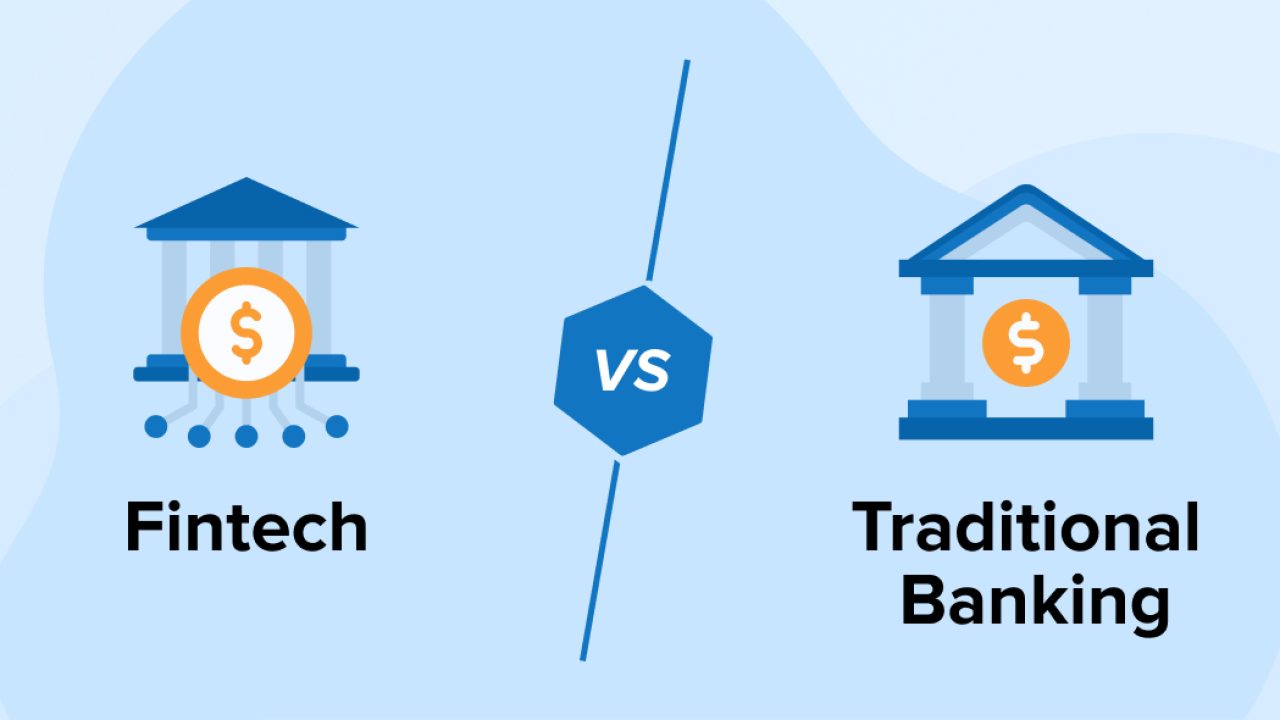Business
Luxury FintechZoom: A Wealth Management

The fusion of luxury fintechzoom has created a new wave of financial services tailored to meet the needs of high-net-worth individuals. This niche, often called luxury fintech, reshapes how affluent clients manage their wealth, invest, and conduct transactions. In an age where technology drives innovation, luxury fintech stands at the intersection of digital advancements and personalized financial services, offering exclusive solutions beyond the ordinary. But what exactly is luxury fintech, and why has it become so essential in today’s economic landscape?
What is Luxury Fintechzoom?
Defining Fintech
Fintech, short for financial technology, refers to the integration of technology into offerings by financial services companies to improve their use and delivery to consumers. It includes everything from mobile banking and cryptocurrency to crowdfunding platforms and robo-advisors.
The Intersection of Luxury and Fintech
Luxury fintech is a specialized branch of fintech that focuses on providing high-end financial services to affluent clients. These services are characterized by exclusivity, personalization, and a high level of sophistication, catering to wealthy individuals’ unique needs and preferences.
Evolution of Luxury Fintech
The concept of luxury fintech has evolved as technology has advanced and the needs of affluent consumers have shifted. From the early days of simple digital banking solutions, luxury fintech has become a multi-faceted industry offering everything from personalized investment strategies to blockchain-secured transactions.
The Growing Demand for Luxury Fintechzoom Services
Changing Consumer Behavior
Affluent consumers increasingly seek personalized and exclusive financial services that align with their lifestyles. This shift in consumer behavior has driven the demand for luxury fintech solutions that offer more than just standard banking services.
Wealth Management and Luxury Fintech
Luxury fintech companies are revolutionizing wealth management by offering tailored solutions that cater to the specific needs of high-net-worth individuals. These services often include personalized investment strategies, exclusive access to financial products, and dedicated financial advisors.
The Role of Technology in Luxury Financial Services
Technology plays a crucial role in developing and delivering luxury fintech services. From AI-driven investment platforms to blockchain-secured transactions, technology ensures that these services are exclusive, efficient, and secure.
Key Players in the Luxury Fintech Industry
Leading Companies and Startups
Several companies and startups have emerged as leaders in the luxury fintech space. These include established financial institutions adapted to the digital age and innovative startups that have disrupted traditional financial services with their cutting-edge solutions.
Innovative Products and Services
Luxury fintech is characterized by a range of innovative products and services designed to meet the unique needs of affluent clients. These include high-end credit cards, personalized wealth management platforms, and bespoke financial advisory services.
Case Studies: Success Stories in Luxury Fintech
Several luxury fintech companies have succeeded significantly by offering unique solutions catering to wealthy clients’ needs. These case studies highlight the impact of luxury fintech on the financial industry and the benefits it provides to its target audience.
Luxury Fintech and Personalized Banking Experiences
The Shift Towards Personalization
Personalization is at the core of luxury fintech services. By leveraging data analytics and AI, luxury fintech companies can offer tailored financial solutions that meet their clients’ specific needs and preferences.
How AI and Machine Learning Enhance User Experience
AI and machine learning are essential tools in the luxury fintech industry. These technologies enable companies to analyze vast amounts of data, identify trends, and create personalized financial strategies that align with the goals of affluent clients.
Tailored Investment Strategies for High-Net-Worth Individuals
Luxury fintech companies offer tailored investment strategies to maximize returns while minimizing risk. These strategies are often based on the client’s financial goals, risk tolerance, and investment preferences.
Luxury Fintech Products and Services
Exclusive Credit Cards and Payment Solutions
Luxury fintech companies offer exclusive credit cards and payment solutions with a range of benefits, including personalized customer service, exclusive events, and rewards tailored to the client’s lifestyle.
High-End Wealth Management Platforms
Wealth management platforms in the luxury fintech are designed to provide affluent clients access to various investment options, including alternative assets, private equity, and hedge funds. These platforms often include personalized investment advice and portfolio management services.
Bespoke Financial Advisory Services
Luxury fintech companies offer bespoke financial advisory services catering to high-net-worth individuals’ unique needs. These services often include tax planning, estate planning, and philanthropic advisory.
The Role of Blockchain and Cryptocurrencies in Luxury Fintech
The Emergence of Blockchain in Finance
Blockchain technology has emerged as a critical component of luxury fintech, offering secure and transparent solutions for high-value transactions. The decentralized nature of blockchain ensures that transactions are tamper-proof and resistant to fraud.
Luxury Goods and Cryptocurrency Transactions
Cryptocurrencies are becoming increasingly popular in the luxury market, with more affluent clients using digital currencies to purchase high-end goods and services. Luxury fintech companies facilitate these transactions by offering secure and efficient payment solutions.
Securing High-Value Transactions with Blockchain
Blockchain technology provides an added layer of security for high-value transactions, ensuring that they are executed seamlessly and without the risk of fraud. This is particularly important in the luxury market, where the stakes are often higher.
Challenges and Risks in the Luxury Fintechzoom Industry
Regulatory Challenges
The luxury fintech industry faces several regulatory challenges, particularly in data privacy, anti-money laundering, and financial transparency. Companies must navigate these challenges to ensure compliance with local and international regulations.
Cybersecurity Threats
Cybersecurity is a significant concern in the luxury fintech industry, given the high value of transactions and the sensitive nature of client information. Companies must invest in robust security measures to protect against cyber threats.
Market Volatility and Economic Uncertainty
Luxury fintech companies must also contend with market volatility and economic uncertainty, which can impact the value of investments and the overall demand for luxury financial services. Companies must be agile and adaptive to navigate these challenges successfully.
The Future of Luxury Fintech
Emerging Trends in Luxury Fintech
Several emerging trends are set to shape the future of luxury fintech, including the increased use of AI, the rise of sustainable finance, and the growing importance of digital currencies in the luxury market.
The Impact of Artificial Intelligence and Big Data
AI and big data are set to play an increasingly important role in luxury fintech, enabling companies to offer even more personalized and efficient services to their clients. These technologies will continue to drive innovation in the industry.
Predictions for the Next Decade
The luxury fintech industry is expected to grow significantly over the next decade, driven by technological advancements and the increasing demand for personalized financial services. Companies that can adapt to these changes and offer innovative solutions will be well-positioned for success.
How to Choose the Right Luxury Fintech Service
Factors to Consider
When choosing a luxury fintech service, it’s essential to consider factors such as the company’s reputation, the range of services offered, and the level of personalization available. Affluent clients should also consider the security measures to protect their assets and information.
Evaluating Service Providers
Evaluating service providers is crucial in selecting the exemplary luxury fintech service. Clients should seek providers with a proven track record, positive client testimonials, and a commitment to innovation and excellence.
Importance of Trust and Transparency
Trust and transparency are vital in the luxury fintech industry. Clients should choose service providers that prioritize these values and are committed to communicating honestly.
Luxury Fintech vs. Traditional Financial Services

Luxury Fintech vs. Traditional Financial Services
Comparing Customer Experience
Luxury fintech services offer a more personalized and exclusive customer experience than traditional financial services. These services are designed to cater to the unique needs of affluent clients, providing them with tailored solutions beyond standard offerings.
Efficiency and Innovation in Fintech
Fintech companies are known for their efficiency and innovation, often outpacing traditional financial institutions in delivering cutting-edge solutions. Luxury fintech companies leverage this innovation to offer exclusive services that meet the evolving needs of wealthy clients.
The Role of Traditional Banks in a Fintech-Driven World
While fintech companies have disrupted the financial industry, traditional banks still play a crucial role in providing financial services. However, these banks must adapt to the changing landscape by embracing technology and offering more personalized services to remain competitive.
The Global Impact of Luxury Fintechzoom
How Luxury Fintech is Changing Global Markets
Luxury fintech significantly impacts global markets, particularly in regions with a high concentration of wealthy individuals. These markets are seeing increased demand for personalized financial services, leading to the growth of luxury fintech companies.
Regional Differences in Adoption
The adoption of luxury fintech varies across regions, with some areas embracing these services more readily than others. Factors such as local regulations, cultural preferences, and the level of technological advancement play a role in these differences.
The Influence of Culture on Luxury Fintech
Culture plays a significant role in shaping the luxury fintechzoom industry, influencing everything from the types of services offered to how they are marketed. Companies must understand and adapt to cultural differences to succeed in this global industry.
Sustainability and Ethical Considerations in Luxury Fintech
Green Finance and Sustainable Investments
Sustainability is becoming increasingly important in the luxury fintech, with more clients seeking green finance options and sustainable investments. Luxury fintech companies are responding by offering products that align with these values.
Ethical Banking Practices
Ethical banking practices are also gaining traction in the luxury fintech, with companies emphasizing transparency, fairness, and social responsibility. These practices appeal to affluent clients who prioritize ethical considerations in their financial decisions.
The Role of Luxury Fintech in Promoting Sustainability
Luxury fintechzoom companies have the potential to play a significant role in promoting sustainability by offering products and services that support environmental and social causes. These efforts attract clients who are passionate about making a positive impact through their financial choices.
Case Studies: Real-World Applications of Luxury Fintechzoom
Examples from Leading Brands
Several leading brands in the luxury fintech space have successfully implemented innovative solutions that cater to the needs of affluent clients. These examples highlight the potential of luxury fintech to transform the financial industry.
Innovations in Client Engagement
Luxury fintechzoom companies continually find new ways to engage with clients, from personalized digital experiences to exclusive events and offerings. These innovations help build strong relationships with clients and enhance their overall experience.
The Future of Luxury Fintech through Real-Life Scenarios
Real-life scenarios demonstrate luxury fintech’s potential to shape the financial industry’s future. These case studies provide valuable insights into the challenges and opportunities that lie ahead for companies in this space.
Conclusion
Luxury fintechzoom redefines how high-net-worth individuals manage their wealth and conduct financial transactions. By combining the latest technology with personalized services, luxury fintech companies offer a unique and exclusive experience beyond traditional financial services. As the industry continues to evolve, it will play an increasingly important role in the global economic landscape, offering innovative solutions that cater to the specific needs of affluent clients.
FAQs
What is the difference between luxury fintech and traditional fintech?
Luxury fintech focuses on providing exclusive, personalized financial services to affluent clients, while traditional fintech offers more general services to a broader audience.
How does luxury fintech cater to high-net-worth individuals?
Luxury fintech offers tailored solutions, including personalized investment strategies, exclusive credit cards, and bespoke financial advisory services designed specifically for the unique needs of wealthy clients.
What are the key risks involved in luxury fintech?
Key risks include regulatory challenges, cybersecurity threats, and market volatility. Luxury fintech companies must navigate these risks to ensure the security and success of their services.
How do blockchain and cryptocurrencies fit into luxury fintech?
Blockchain and cryptocurrencies are increasingly used in luxury fintech for secure, high-value transactions and to offer innovative payment solutions for luxury goods.
What is the future outlook for luxury fintech?
The luxury fintech industry is expected to grow significantly, driven by technological advancements and the increasing demand for personalized financial services.
Business
Eric Emanuel Clothing: The Ultimate Guide to the Hottest Streetwear Brand

Eric Emanuel has captured the streetwear clothing industry by storm with welcome singular designs, premium craftsmanship, and ingrained link to basketball education. What initiated as a narrow venture has grown into a all-encompassing wonder, with stars, jocks, and fashion enthusiasts gaudy the brand’s sign core, jerseys, and stylish clothing. If you’re expecting the latest currents in enjoyment sportswear, Eric Emanuel Clothing is a must-encourage for your dresser.
The Story Behind Eric Emanuel’s Rise to Fame
Eric Emanuel’s journey into fashion started with a passion for ball and expensive sportswear. His beginning selections were rule basketball shorts, that quickly boosted friction between streetwear enthusiasts. With a deep understanding of cloth condition, color schemes, and regretful still modern aesthetics, he incised a slot in the competitive experience of exclusive streetwear.
Over the years, Eric Emanuel has collaborated with bigger brands like Adidas, Reebok, and New Era, creating limited-edition pieces that betray principles almost directly. His groups are inspired by 90s sports civilization, mixing classic designs, accompanying modern-epoch comfort and indulgence.
Signature Pieces from Eric Emanuel Clothing
1. Eric Emanuel EE Shorts – The Brand’s Crown Jewel
One of the ultimate emblematic pieces from the Eric Emanuel group is the EE Shorts. These premium mesh ball shorts have grown into a anecessityy for two together professionals and fashion participants. With colorful banner, embroidered tags, and superlative comfort, they are perfect for casual clothes, workouts, or even naming accompanying expensive tennis shoes.
Why EE Shorts Stand Out?
- High-Quality Mesh Fabric: Ensures breathability and stamina.
- Vibrant Colorways: From classic policeman to clear bright as in light and delicate shades.
- Limited-Edition Releases: Often betray an inside summary.
- Celebrity Endorsements: Worn by top jocks and conductors, pushing their recognition.
2. Eric Emanuel Hoodies and Sweatshirts – Comfort Meets Luxury
For those who love soft, still stylish apparel, Eric Emanuel hoodies and sweatshirts are socially obligatory-have. These pieces feature premium understanding blends, bulky fits, and minimalistic detailing, making authority the perfect addition to any streetwear lot.
What Makes Them Special?
- Super Soft Fabric: High-quality fabric guarantees an easy fit.
- Streetwear Aesthetic: Simple, still colorful designs that stick out.
- Perfect for Layering: Can be double accompanying EE core, denims, or joggers for a fashionable look.
3. Eric Emanuel Jerseys – A Tribute to Classic Sportswear
Eric Emanuel’s jerseys honor the golden time of ball, with designs stimulated by classic group dresses. These jerseys feature bright artwork, stitched trademarks, and premium materials, making authority a collector’s item for ball fans and fashion sweethearts alike.
Key Features of EE Jerseys
- Authentic Sportswear Look: Perfect for the court.
- Limited-Edition Drops: Ensures particularity.
- Lightweight and Breathable: Ideal for casual clothes and strong efficiency.
Where to Buy Authentic Eric Emanuel Clothing?
1. Official Eric Emanuel Website
The best place to purchase original Eric Emanuel clothing is through the official Eric Emanuel site. The section frequently updates accompanying new releases and restricted collaborations, offering fans a first approach to restricted drops.
2. Resale Platforms – StockX, Grailed, and GOAT
Due to the extreme demand and speedy sellouts, many EE pieces are usable on resale principles like StockX, Grailed, and GOAT. While prices grant permission to be above the sell, these policies guarantee genuineness and specify a secure habit to purchase exceptional pieces.
3. High-End Retailers – KITH, SSENSE, and END Clothing
Several enjoyment streetwear shops carry Eric Emanuel clothing, containing KITH, SSENSE, and END Clothing. Shopping from these retailers guarantees a valid product and frequently contains exclusive colorways not available elsewhere.
How to Style Eric Emanuel Clothing?
Casual Streetwear Look
Pairing Eric Emanuel core accompanying an oversized hoodie and footwears forms a relaxed still fashionable vibe. Add few high socks and a right cap for a 90s-animated aesthetic.
Sporty Luxe Outfit
For a more bright approach, wear an EE top accompanying diet-fit joggers and creator tennis shoes. This join of sports and enjoyment fashion is perfect for streetwear lovers the one want a bright still cultured look.
Layering for a High-Fashion Statement
Layer an Eric Emanuel hoodie under a charge covering with roomy–stage shorts and accessories like chains and glasses to create an elevated city beautiful.
Why Eric Emanuel Clothing is Worth the Investment?
Eric Emanuel’s promise to value, exclusivity, and educational impact creates welcome clothing in addition to apparel—it’s a declaration. Whether you’re a basketball fan, a sneakerhead, or are the one who acknowledges high-end streetwear, EE pieces offer eternal appeal and wonderful creativity.
Key Reasons to Invest in Eric Emanuel Clothing
- Premium Materials: Ensuring stamina and comfort.
- Limited-Edition Drops: Adds uniqueness and resale value.
- Strong Cultural Influence: Deep ties to ball and cool–leap idea.
- Versatile Styling: Perfect for two together chance and enjoyment streetwear looks.
Final Thoughts
Eric Emanuel has strongly mixed sports nostalgia accompanying existing street fashion, generating a brand that resonates with fans worldwide. His singular approach to expensive sportswear, linked with accompanying restricted releases and celebrity endorsements, has earned him a welcome place in the fashion industry.
If you’re honor promote your closet with insolent still versatile pieces, Eric Emanuel Clothing is a must-have.
Business
The Rise of Represent Hoodie Shorts: A Fusion of Streetwear and Luxury

Represent Hoodie Shop Shorts have shown as a socially obligatory part for fashion believers and streetwear fans alike.Let’s study the globe of Represent and investigate why their meaning is making waves in the clothing industry. In the always–developing planet of fashion, place styles come and go, accompanying the seasons, few brands manage to get. A corner that resounds seriously among their peers. Represent, a UK-located streetwear brand, has approved just that.
The Origins of Represent: A Brand Built on Authenticity
Represent Hoodie was organized in 2012 by relatives George and Mike Heaton. Who initiated the brand from their workplace in the UK? What started as a very small operation won. The brand’s ethos revolves around building pieces that are not only fashionable but again functional, sturdy, and eternal. Over the lifetime, Represent has developed into a global wonder. Cooperating with important names and earning a dependable following with stars, professionals, and fashion influencers.
The Anatomy of Represent Hoodie Shop Shorts
These shorts are prepared in advance along the unchanging level of care and recognition to detail as the brand’s hoodies, providing a premium brand that stands the test of time.
- Premium Materials: Represent Hoodie is popular for providing finest fabrics, and their shorts are of no irregularity. Made from heavyweight understand or creative blends, these shorts offer a luxurious feel while controlling stamina.
- Timeless Design: The design of Represent Hoodie Shop Shorts is a masterclass in minimalism and use. Clean lines, clever tainting, and a tailor-made fit present these core a silky, minimized look that is perfect for dressing formally or low.
- Attention to Detail: Features like finished seams, adaptable drawstrings, and a wonderful link guarantee that they not only look good but are made well.
- Versatility: One of the rare conditions of Represent Hoodie Shop Shorts is their flexibility. They are fashioned to transition seamlessly from time to midnight, summertime to cold, and random to almost-formal backgrounds.
The Cultural Impact of Represent Hoodie Shop Shorts
Fashion is as well just caparison; it’s a form of self-language and a reflection of educational currents. Represent Hoodie Shop Shorts have grown into a design of the up-to-date streetwear movement, that blurs the fine line between extreme fashion and common wear. They appeal to an era that values principles of identity, genuineness, and status over fleeting styles.
Celebrities and influencers have played an important function in popularizing these core. From artists to sports, many important figures have been spotted wearing Represent, further sealing enchantment rank as a go-to brand for those informed.
Styling Represent Hoodie Shop Shorts: Tips and Ideas
One of the reasons Represent Hoodie Shop Shorts have won a specific loyal following is their flexibility. Here are any plans for calling these recognizable core:
- Casual Streetwear Look: Pair the core with a clear tee, a pair of shoes, and a cap for an easily cool outfit.
- Smart-Casual Ensemble: Elevate the sense by making authority accompanying a fresh silver top, loafers, and a hide belt. This look is perfect for a vacation eve out or a random day at the facility.
- Athleisure Vibes: Combine the short along a fitted container top, running footwear, and a workout bag for a casual yet fashionable look. The core, easy fit form them is ideal for active activities.
- Layering for Cooler Weather: Don’t eat too much when the temperature drops. Layer authority accompanying pantyhose, a longline coat, and boots for a trendy cold look.
Why Represent Hoodie Shop Shorts Are Worth the Investment?
In a global placewhere fast fashion dominates, supplying in high-quality pieces like Represent Hoodie Shop Shorts is a solution that pays in the end. These cores are not just a current; they areana eternal addition to some dresser. Their stamina, flexibility, and precise design make them a helpful model for one of the one principle quality and style.
Conclusion: The Future of Represent and Streetwear
As Represent advances to expand and evolve, enchantment needs to maintain its character, innovation, and genuineness. The brand’s Hoodie Shop Shorts are a testament to allure strength to form pieces that resonate with a universal hearing while staying real to allure birthplaces. In a fashion landscape that is to say uniformly changeful, Represent has managed to help itself to a singular scope that bridges the gap between streetwear and comfort.
Whether you’re a seasoned fan of the brand or new to the experience of Represent, their Hoodie Shop Shorts are a must-have part that materializes the high-quality of new fashion. With their premium matters, eternal design, and educational meaning, these core are as well just clothing—they’re a behavior. So, if you’re seeking to augment your trunk with faraway that integrates style, comfort, and genuineness, look no further than Represent Hoodie Shop Shorts.
Business
Amiri: Redefining Luxury Streetwear

Amiri is a brand that has redefined the perimeters of the middle from two points: indulgence fashion and streetwear. Founded by Mike Amiri in 2014, the Los Angeles-located label has enhanced equivalent accompanying expensive skill, disobedient esthetics, and a singular blend of popular music edge accompanying existing culture. Amiri’s designs are not just attire; they are a declaration of personality, artistry, and stubborn characteristics.
The Vision Behind Amiri
Mike Amiri’s dream for the brand was clear in the beginning: to conceive pieces that resound with the essence of Los Angeles, a city famous for its allure throbbing education, imaginative strength, and various influences. Drawing stimulus from the city’s pleasant sounds, harmonized setting, slide education, and nudity genuineness of pavement style, Amiri Clothing has hollowed out an alcove that appeals to those who inquire two together indulgence and a sense of disobedience. The brand’s accumulations are thinking of Amiri’s journey, integrating welcome adoration for fashion, and accompanying welcome love for skill and sounds that are pleasant and harmonized.
Craftsmanship and Attention to Detail
What sets Amiri sapartis Allure’s unchanging obligation to creativity. Each piece is carefully devised and built utilizing the best and brightest materials, from premium denim and indulgent leathers to help-upset clothes and complicated embellishments. The brand’s sign MX1 dungarees, e.g., is a tribute to this sanctification. Featuring help-finished analyses, practice fittings, and a perfect fit, they have enhanced a necessity in the wardrobes of fashion addicts in general.
Amiri’s consideration to detail longers further allure attire. Accessories like hide jackets, tennis shoes, and bags are arrange accompanying the unchanging level of accuracy and flair. The brand’s use of singular feelings, insolent prints, and creative methods guarantees that all article is a work of wearable skill.
The Amiri Aesthetic
The Amiri Beautiful is an agreeable blend of indulgence and streetwear. It’s about communicating the common and heightening it to entity particular. Distressed denim, explicit tees, and hoodies are reimagined, accompanying exclusive finishes, while tailor-made blazers and coats are soaked, accompanying a loose city vibe. This adjacency of styles forges a loo, namely two together nervous and cultured, making Amiri a favorite with superstars, instrumentalists, and fashion-forward things.
The brand’s color palette frequently contains toned-down sound tones like dark, silvery, and silver, underlined accompanying pops of insolent banby ner and silvery finishes. Patterns to a degree camouflage, checkered, and decorative prints adjoin wisdom and figure to the groups, while rule fittings and quilting support a touch of uniqueness.
Celebrity Endorsements and Cultural Impact
Amiri’s even eminence has been inflamed by the allure powerful superstar following. Icons like Justin Bieber, Kanye West, and Travis Scott have existed speckled tiring the brand and sealing a go-to label for those the ones going to create a charge. Who ared’s capability to resound with accompanying composers and experts is no coexistence; allure designs integrate the alike artistry and audacity that delineate their work.
Beyond superstar endorsements, Amiri live well a meaningful educational impact. It has bridged the breach ‘tween extreme fashion and streetwear, trying that two together can coincide and mushroom. The brand’s fame has stimulated a generation after baby boom of designers to push bounds and challenge usual beliefs of indulgence.
Sustainability and Ethical Practices
In the current age, Amiri has again captured steps to combine sustainability into allure practices. While upholding aalluringassurance of character and skill, the brand has started surveying environmental fabrics and result systems. This shift indicates an increasing knowledge of the fashion industry’s effect on the atmosphere and a desire to constitute an acceptable future.
Amiri’s approach to sustainability is caring and deliberate. By prioritizing endurance and eternal design, the brand spurs customers to purchase pieces that will last for ages, lowering the need for fast fashion. This devoted effort to something enduring joins the brand’s central principles of kindness and genuineness.
The Amiri Experience
Owning an Amiri piece is in addition to just a purchase; it’s an occurrence. From the importance you removing a carefully bundled article to the first period you wear it, you can feel the brand’s faithfulness to superiority. Each piece communicates news, indicating the brand’s ancestries in Los Angeles and allure assurance to aggressive the horizons of fashion.
The brand’s leader store on Rodeo Drive in Beverly Hills offers a riveting buying occurrence, accompanying allure glossy design, and a curated choice of pieces. It’s a scope place indulgence meets artistmittinwhere g consumers to sufficiently soak themselves in the globe of Amiri.
Why Choose Amiri?
Aworldis not just a brand; it’s a behavior. It’s for those the one dare expected various, the one advantage condition over length, and the one be going to express their personality through their attire. Whether you’re tense to allure insolent designs, flawless creativity, or educational pertinence, Amiri offers entity really singular.
In a experience place fashion is frequently brief, Amiri is prominent as a brand that prioritizes genuineness and brilliance. It’s a festival of self-verbalization, a mixture of indulgence and streetwear, and a tribute to the capacity of artistry. When you wear Amiri, you’re not just tiring apparel – you’re tiring faraway of creativity.
Conclusion
Amiri has redefined what resources are expected of an indulgence streetwear brand. With the allure of creative designs, singular skill, and enlightening pertinence, it has scored an alluring place as an officer in the clothing industry. Whether you’re a seasoned fan or new to the brand, Amiri offers a singular blend of style, characteristics, and stance that is, to say, unique. Explore the globe of Amiri and uncover what it means to wear indulgence with an edge.
-

 News9 months ago
News9 months agoBrooke Tilli – Bio, Age, Relationships, Career, Net Worth, and Boyfriend
-

 Celebrity8 months ago
Celebrity8 months agoPedro Vaz Paulo: A Life of Redemption
-

 Celebrity8 months ago
Celebrity8 months agoBurak Deniz: The Turkish Heart-Throb
-

 Tech8 months ago
Tech8 months agoCloud Computing: Enabling IT Innovation
-

 Tech8 months ago
Tech8 months agoSaaS Integration: Cloud-Based Software
-

 News8 months ago
News8 months agoDefine a Offshore Accident Lawyer
-

 Business8 months ago
Business8 months agoJanitor AI: Future of Auto Maintenance
-

 Entertainment8 months ago
Entertainment8 months agoAşk-ı Memnu: The Forbidden Love



